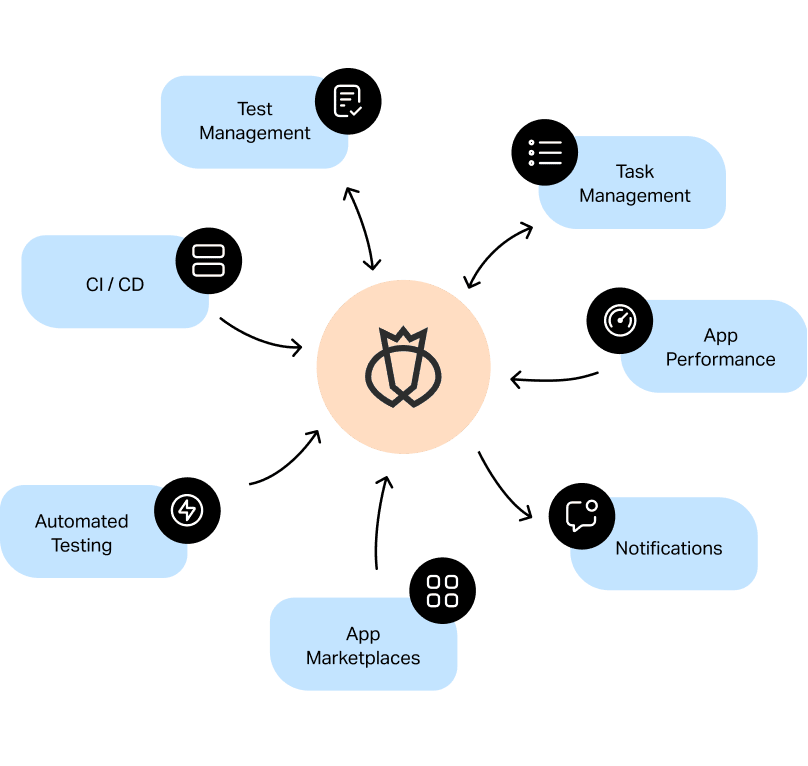Exploring the Future of Automation Testing in Software Application Advancement
Exploring the Future of Automation Testing in Software Application Advancement
Blog Article
From Guidebook to Automated Screening: A Comprehensive Overview to Transitioning Efficiently and Successfully
In the realm of software program screening, the change from guidebook to automated procedures has actually ended up being a progressively essential transition for organizations looking for to boost effectiveness and precision in their testing methods. The journey from handbook to automated testing is not without its difficulties, however when approached purposefully and with a clear plan in mind, the advantages can be significant.
Benefits of Automated Evaluating
Automated testing supplies many advantages, enhancing effectiveness and precision in software application growth procedures. Automated tests can be run simultaneously on numerous tools and operating systems, considerably speeding up the testing stage contrasted to hand-operated testing.
In addition, automated screening ensures a greater degree of precision in finding flaws. Given that automated examinations comply with predefined manuscripts, human error is minimized, causing more reputable examination outcomes. Uniformity in testing is also boosted, as automated examinations implement the exact same actions precisely each time they are run. This uniformity is vital in making certain that all capabilities of the software are thoroughly tested, decreasing the chance of unnoticed insects slipping via to manufacturing.
Choosing the Right Devices

First of all, assess your goals and requirements. Recognize the extent of your job, the modern technologies involved, and the ability of your team. This analysis will assist you determine the features and capabilities you require in your testing devices.
Second of all, consider the compatibility of the tools with your existing systems and processes. Seamless combination with your current software program development lifecycle is important to ensure a smooth change to automation.
In addition, evaluate the scalability and flexibility of the devices. As your screening needs advance, the devices should be able to adjust and suit adjustments properly.
Finally, consider the assistance and neighborhood around the tools. Robust support and an active user area can provide important sources and support when carrying out automated testing. By carefully considering these facets, you can choose the right devices that align with your requirements and established the stage for an effective change to automated screening.
Composing Effective Examination Manuscripts

When crafting examination scripts, it is important to take into consideration the certain demands of the software application being evaluated and guarantee that the manuscripts deal with all critical performances. Descriptive and clear calling conventions for test manuscripts and test cases can boost readability and maintainability. Furthermore, including error handling mechanisms within the test manuscripts can help in recognizing and attending to problems quickly.
Furthermore, organizing test manuscripts right into modular parts can improve reusability and scalability, minimizing redundancy and enhancing performance in examination script maintenance. Regular testimonials and updates to evaluate manuscripts are vital to keep pace with developing software demands and functionalities. By adhering to these principles, testers can produce robust and reliable test scripts that contribute significantly to the success of automated screening processes.
Integrating Automation Into Workflows
By effortlessly integrating automated testing tools like Selenium or Appium into the software application development lifecycle, teams can attain faster feedback on code modifications, leading to quicker bug discovery and resolution. This combination enables for continuous testing throughout the advancement process, ensuring that any kind of problems are recognized early on, resulting in higher software program top quality. Proper integration of automation devices calls for cooperation in between growth, testing, and operations article source groups to establish a unified workflow that maximizes performance and performance in providing high-grade software application items.
Making Certain a Smooth Transition
Successfully transitioning to automated testing includes precise planning and cautious execution to reduce interruptions and optimize effectiveness in the software development process - automation testing. To ensure a smooth transition, it is necessary to start by carrying out a complete analysis of the existing testing processes and recognizing locations where automation can bring the most considerable advantages. Engaging with all stakeholders early why not try these out in the process, consisting of designers, testers, and task managers, is critical for gathering support and buy-in for the automation campaign
Interaction is vital throughout this change phase. Clear interaction of the goals, advantages, and expectations of automated testing assists to handle any resistance or problems that might emerge. Furthermore, providing appropriate training and resources for employee to upskill in automation devices and strategies is crucial for guaranteeing a successful transition.

Final Thought
Finally, transitioning from guidebook to automated screening supplies countless benefits, consisting of increased performance and integrity. By choosing the ideal tools, creating effective test manuscripts, and incorporating automation perfectly right into process, companies can guarantee a smooth and effective transition. It is vital to embrace automation as a useful property in software testing procedures to boost general top quality and productivity.
In the realm of software screening, the shift from manual to automated processes has actually become a progressively important change for organizations seeking to enhance performance and accuracy in their testing methods. Automated examinations can be run simultaneously on several tools and running systems, significantly speeding up the testing phase contrasted to manual screening. Uniformity in screening is likewise improved, as automated tests execute the exact same steps exactly each time they are run.To use this link make certain the successful execution of chosen testing tools, the production of efficient examination manuscripts plays a vital role in confirming the capability and efficiency of automated procedures - automation testing. By complying with these principles, testers can produce durable and reliable test manuscripts that add significantly to the success of automated testing processes
Report this page